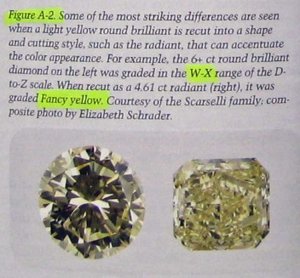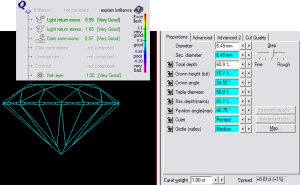TuffEnough
Rough_Rock
- Joined
- Dec 6, 2006
- Messages
- 9
Hi everyone-
Would like to get a quick opinion on this diamond, I''m concerned that it may be a little deep and the spread a little small compared to other diamonds the same size. Please let me know what your opinion is.
Round Brilliant
2.51 carat
8.63 x 8.68 x 5.47
Depth - 63.2
Table - 56%
Girdle - thin to slgt thick
cutlet - none
Polish - Vg
Symmetry - VG
Clarity - SI1
Color - J
Flourescence - none
This has a GIA cert - the older one so there are no crown or pavillion angles present.
Would like to get a quick opinion on this diamond, I''m concerned that it may be a little deep and the spread a little small compared to other diamonds the same size. Please let me know what your opinion is.
Round Brilliant
2.51 carat
8.63 x 8.68 x 5.47
Depth - 63.2
Table - 56%
Girdle - thin to slgt thick
cutlet - none
Polish - Vg
Symmetry - VG
Clarity - SI1
Color - J
Flourescence - none
This has a GIA cert - the older one so there are no crown or pavillion angles present.









300x240.png)